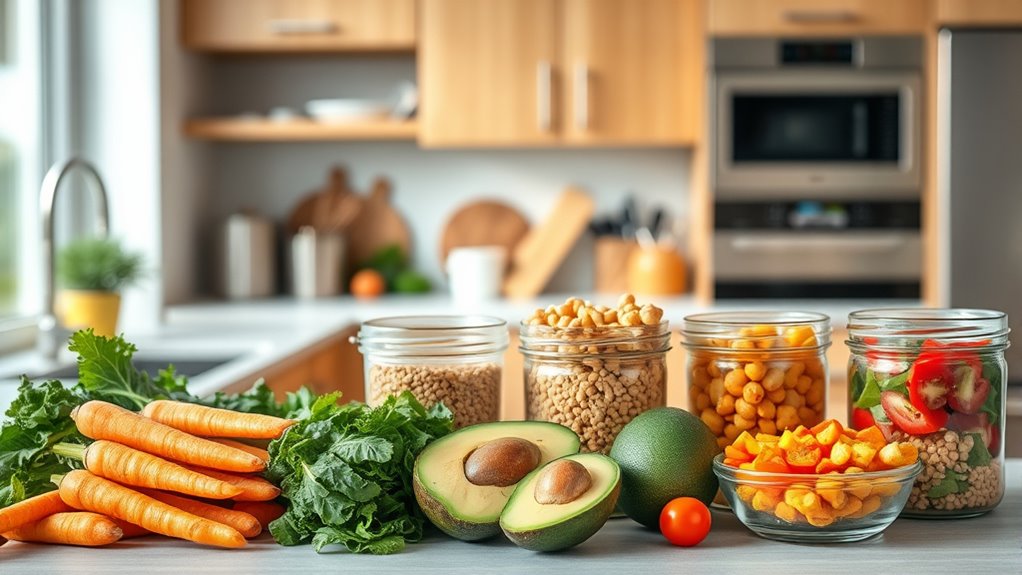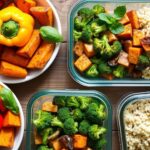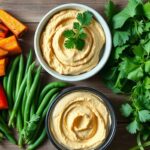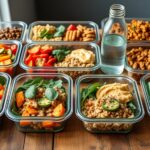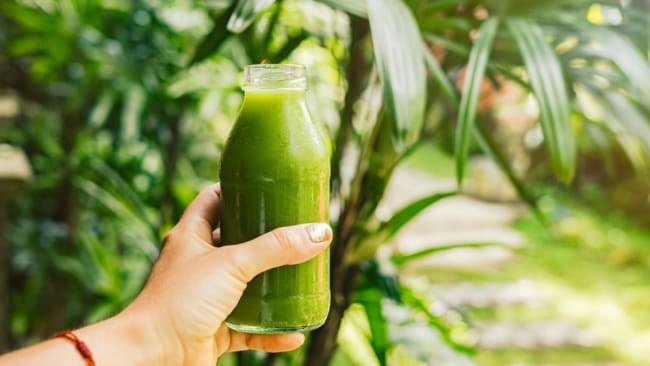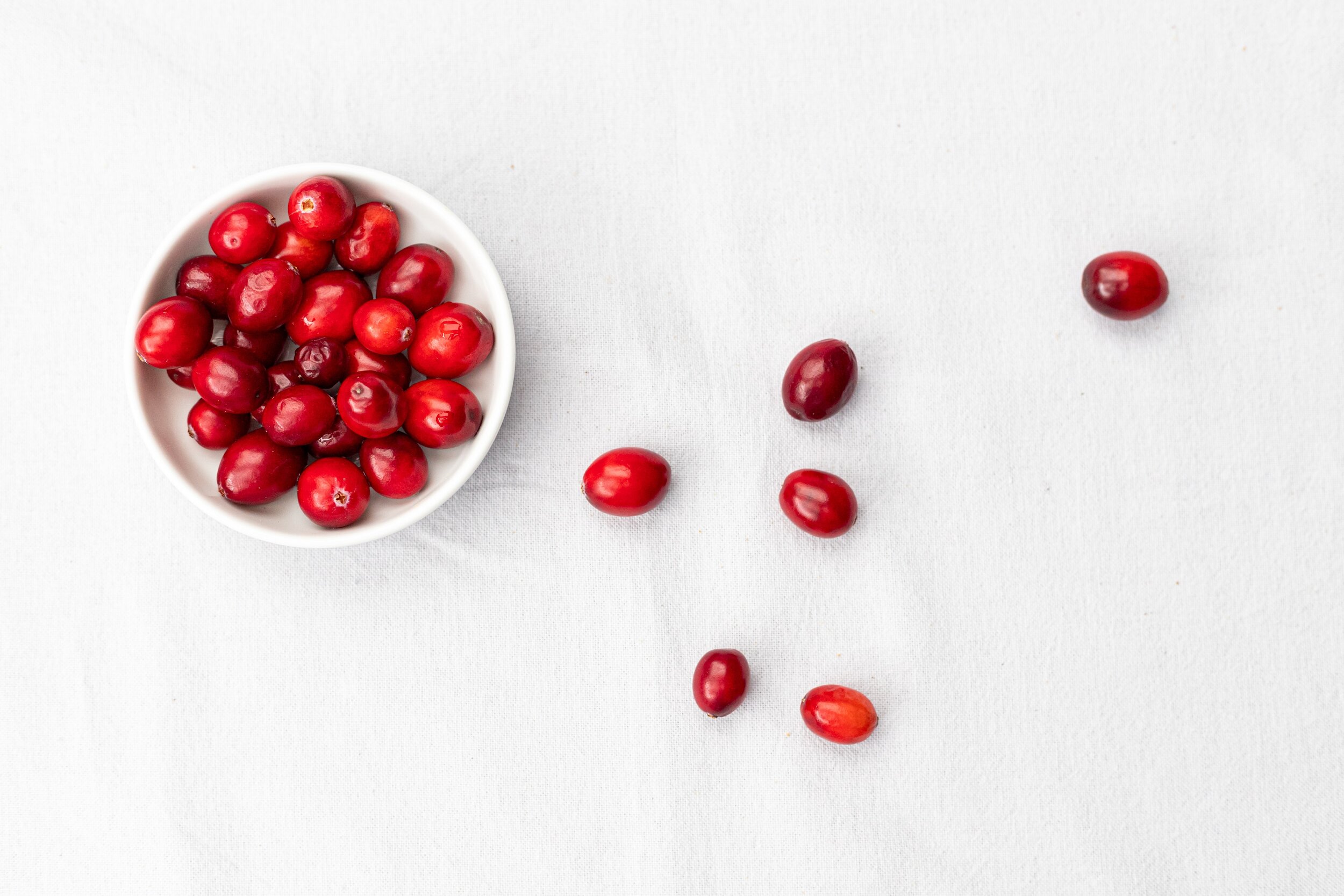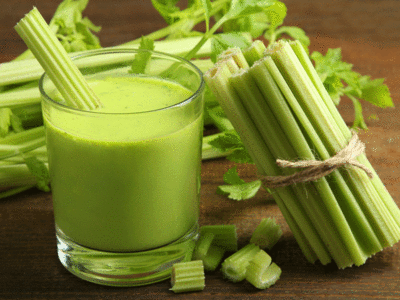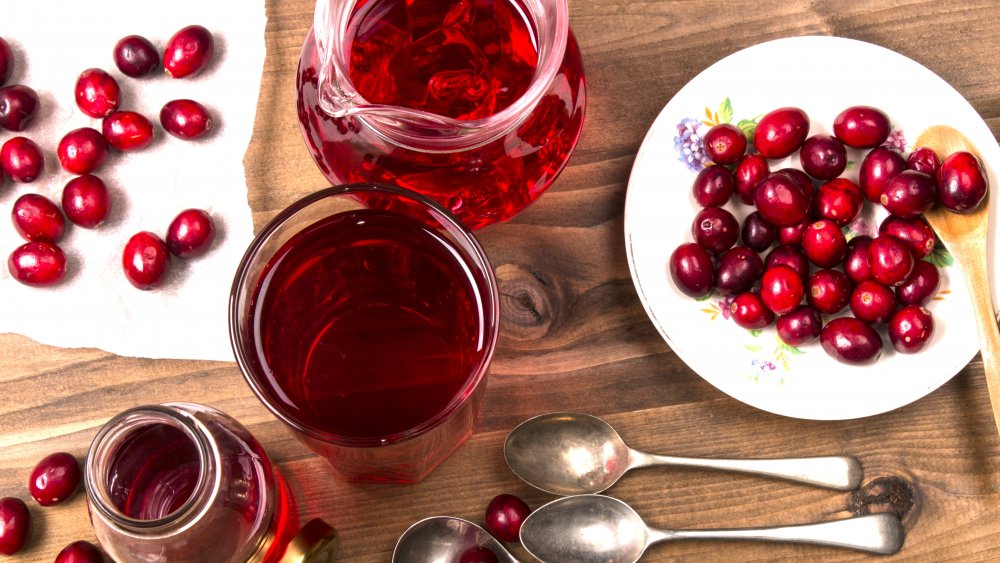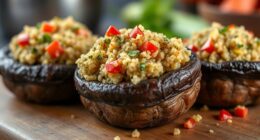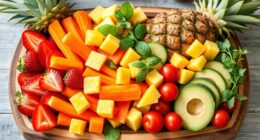Starting a plant-based meal prep is simple and effective. Choose a specific day each week to plan and batch cook staples like grains, beans, and roasted vegetables. Use airtight containers to store pre-portioned meals and snacks, making healthy choices easy. Focus on variety, flavor, and balance to stay committed. As you continue, you’ll discover strategies to keep your meal prep enjoyable and sustainable for your plant-based lifestyle.
Key Takeaways
- Dedicate a specific day weekly to batch cook grains, legumes, and prepare vegetables for easy meal assembly.
- Choose versatile ingredients that can be used in multiple dishes to maximize efficiency and variety.
- Store ingredients separately in airtight containers to maintain freshness and allow flexible meal combinations.
- Incorporate plant-based protein sources like tofu, beans, and tempeh to meet nutritional needs.
- Plan balanced, colorful meals with healthy fats, fiber, and essential nutrients to stay energized and satisfied.
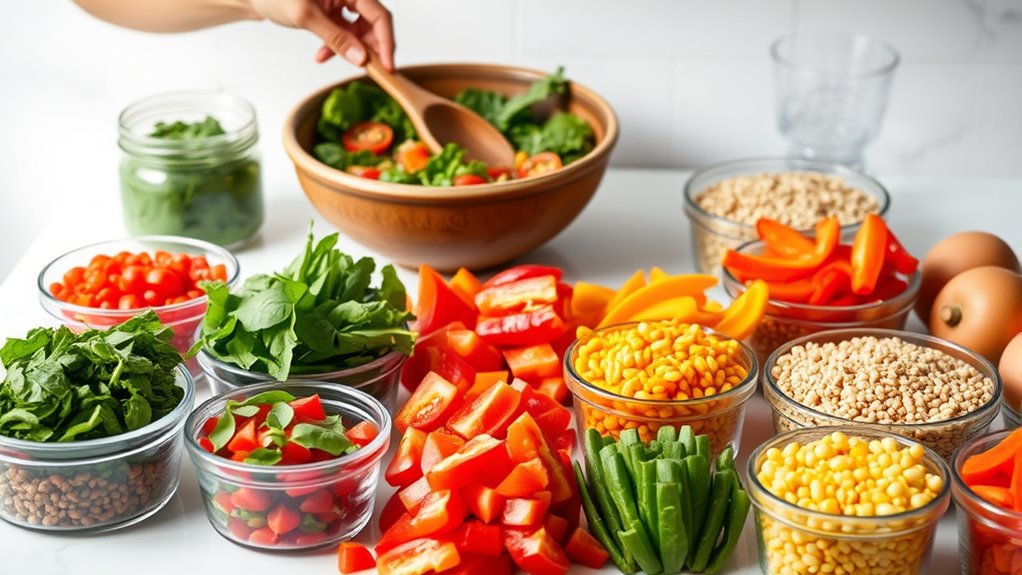
Starting a plant-based diet can seem overwhelming at first, but meal prepping makes it much easier to stay on track. When you plan your meals ahead, you guarantee you’re meeting your nutritional needs while avoiding last-minute temptations. To do this effectively, you’ll want to focus on understanding plant-based nutrition and mastering simple meal prep techniques. Knowing which foods provide essential nutrients like protein, iron, calcium, and vitamin B12 helps you create balanced meals that support your health goals. Incorporate a variety of fruits, vegetables, whole grains, legumes, nuts, and seeds into your plan to cover your nutritional bases.
Meal prepping simplifies a plant-based diet, ensuring balanced, nutrient-rich meals while saving time and reducing stress.
Meal prep techniques are your best tools for streamlining this process. Start by dedicating a specific day each week to prep your meals. Choose recipes that store well and can be easily reheated or eaten cold. Consider batch cooking staples such as cooked grains—brown rice, quinoa, or oats—and versatile legumes like chickpeas or lentils. These ingredients serve as a foundation for multiple dishes, saving time and reducing stress. You can prepare a large batch of roasted vegetables, chop fresh vegetables for salads or bowls, and portion out snacks like nuts or cut fruit for quick access. Using airtight containers keeps everything fresh and organized, making it simple to grab what you need for busy mornings or lunch breaks.
Incorporating plant-based nutrition into your meal prep isn’t complicated once you get the hang of it. Focus on balancing your plates with protein sources like tofu, tempeh, or beans, complemented by colorful vegetables for fiber and antioxidants. Don’t forget to include healthy fats from avocados, nuts, or seeds, which enhance flavor and satiety. For added convenience, prepare protein-rich dishes in advance, such as veggie stir-fries or lentil salads, so you always have nutritious options ready to go. As you become more comfortable, experiment with different seasonings and flavor profiles, keeping your meals exciting and satisfying.
Finally, staying consistent is key. Meal prepping not only saves you time but also helps you make mindful choices aligned with your plant-based goals. By planning ahead, you avoid impulsive Eating out or resorting to less nutritious options. With patience and practice, these meal prep techniques will become second nature, making your plant-based journey enjoyable and sustainable. Remember, the more organized you are, the easier it will be to enjoy delicious, nourishing meals every day.
Frequently Asked Questions
How Do I Ensure Adequate Protein Intake on a Plant-Based Meal Prep Plan?
To guarantee adequate protein intake on your plant-based meal prep plan, focus on incorporating diverse protein sources like beans, lentils, tofu, tempeh, nuts, and seeds. This variety helps maintain nutrient balance and provides all essential amino acids. Plan your meals ahead and include these foods regularly, so you meet your daily protein needs effortlessly while enjoying flavorful, nutrient-rich dishes.
What Are the Best Storage Containers for Plant-Based Meal Prep?
Worried about leaks ruining your meal prep? Go for airtight containers that keep your plant-based meals fresh and prevent spills. Reusable options are eco-friendly and cost-effective, making them a smart choice. Look for BPA-free, durable materials like glass or high-quality plastic. These containers are microwave-safe and stack easily, helping you stay organized. With the right storage, your plant-based meals stay delicious and ready to enjoy anytime.
How Can I Avoid Meal Prep Boredom With Plant-Based Foods?
To avoid meal prep boredom with plant-based foods, focus on adding variety and flavor enhancement. Mix up your ingredients regularly, trying different vegetables, grains, and plant-based proteins. Use herbs, spices, and flavorful sauces to keep meals exciting. Incorporate new cuisines and cooking techniques to challenge your palate. This approach keeps your meals interesting, tasty, and satisfying, making plant-based eating enjoyable and sustainable long-term.
Are There Specific Supplements Recommended for Plant-Based Meal Preppers?
Think of supplements as the safety net beneath your tightrope walk—you need them to stay balanced. For plant-based meal preppers, plant-based supplements like vegan multivitamins can fill nutritional gaps, especially for B12, iron, and omega-3s. These supplements support your health without complicating your prep routine. Incorporate vegan multivitamins into your daily routine to make certain you’re covering all essential nutrients and staying energized on your plant-based journey.
How Do I Meal Prep for Picky Eaters on a Plant-Based Diet?
To meal prep for picky eaters on a plant-based diet, focus on texture preferences and flavor masking. You can incorporate familiar textures like creamy hummus or crispy roasted veggies, and use mild spices or sauces to hide strong flavors they dislike. Offer versatile ingredients that can be combined in different ways, making meals more appealing. Keep it simple, colorful, and tailor recipes to their tastes to encourage acceptance and enjoyment.
Conclusion
Starting your plant-based meal prep journey might seem intimidating at first, but with a little planning, you’ll find it easier than you think. Did you know that plant-based diets can reduce your risk of heart disease by up to 32%? By prepping ahead, you’ll save time, eat healthier, and enjoy more variety. Keep experimenting, stay consistent, and soon you’ll see how simple and rewarding eating plant-based can be. You’ve got this—happy prepping!
Ilana has been a vegan for over 10 years. She originally made the switch for health reasons, but soon found herself becoming more and more passionate about the ethical and environmental implications of a vegan lifestyle. Ilana is the author of The Graceful Kitchen, a blog all about veganism. She loves to cook up delicious and nutritious vegan meals, and share her recipes with others who are interested in leading a cruelty-free life. Ilana is also a strong advocate for using whole foods as the foundation of a healthy diet, and believes that going vegan is one of the best ways to achieve this.
